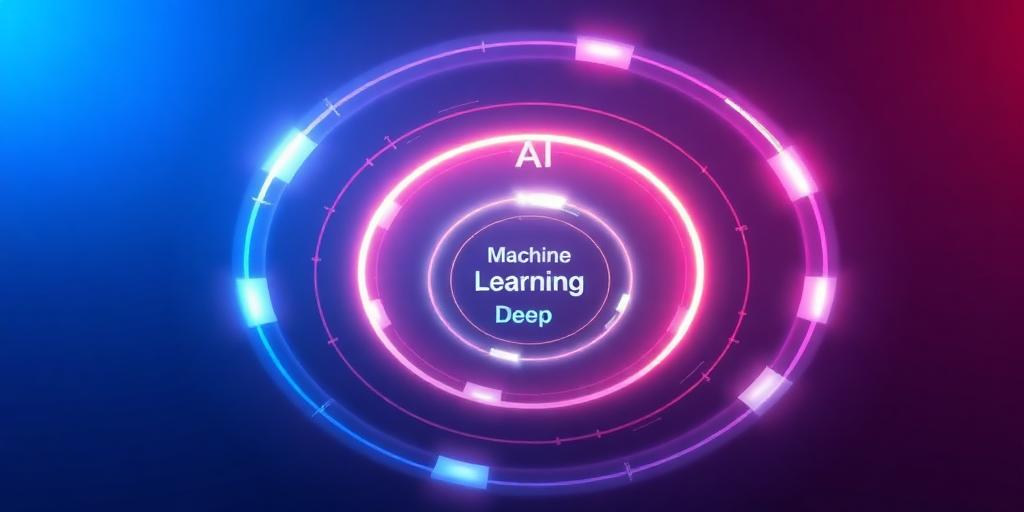In the rapidly evolving landscape of artificial intelligence, terms like AI, Machine Learning (ML), and Deep Learning (DL) are frequently used, often interchangeably. While all three are intertwined, they represent distinct concepts within the broader field of intelligent systems. This article aims to demystify these terms, providing a clear and authoritative explanation of their individual characteristics, interrelationships, and the unique contributions each makes to technological advancement.
Artificial Intelligence (AI): The Grand Vision
At its most fundamental level, Artificial Intelligence refers to the overarching concept of creating machines that can simulate human intelligence. This encompasses any technique that enables computers to mimic cognitive functions such as problem-solving, learning, decision-making, and understanding language. AI is not a new concept; its roots trace back to the 1950s.- Key Characteristic: AI seeks to build machines that think and act like humans, or at least rationally.
- Examples: Early AI involved rule-based expert systems and symbolic reasoning. Modern AI applications range from pathfinding algorithms in GPS to chess-playing computers and virtual assistants.
Machine Learning (ML): Learning from Data
Machine Learning is a significant subset of Artificial Intelligence that provides systems with the ability to automatically learn and improve from experience without being explicitly programmed. Instead of hard-coding rules for every possible scenario, ML algorithms are trained on vast datasets, identifying patterns and making predictions or decisions based on that data.- Key Characteristic: ML focuses on algorithms that allow systems to learn from data, identifying patterns and making predictions.
- How it works: ML systems build models from sample data (training data) to make data-driven predictions or decisions, rather than following static program instructions.
- Types of ML:
- Supervised Learning: Learning from labeled data (e.g., predicting house prices based on historical data with known prices).
- Unsupervised Learning: Finding patterns in unlabeled data (e.g., clustering customer segments).
- Reinforcement Learning: Learning through trial and error, optimizing actions based on rewards or penalties (e.g., training a robot to navigate a maze).
- Examples: Recommendation engines (Netflix, Amazon), spam filters, fraud detection, predictive analytics.
Deep Learning (DL): The Power of Neural Networks
Deep Learning is a specialized subset of Machine Learning, characterized by its use of artificial neural networks with multiple layers (hence "deep"). Inspired by the structure and function of the human brain, these deep neural networks are capable of learning complex patterns directly from raw data, often outperforming traditional ML methods in tasks involving large, unstructured datasets.- Key Characteristic: DL utilizes multi-layered neural networks to learn intricate representations from data, often without human feature engineering.
- Structure: A deep neural network consists of an input layer, an output layer, and many "hidden" layers in between. Each layer processes and transforms the input data, passing it to the next.
- Advantages: Excels in tasks requiring high-level abstraction, such as feature extraction from raw images or speech, and identifying subtle relationships within data.
- Examples: Image recognition (facial recognition, autonomous vehicles), natural language processing (language translation, sentiment analysis), speech recognition (voice assistants).
The Hierarchical Relationship: A Nested Structure
To conceptualize the relationship among these three terms, imagine them as concentric circles or Russian nesting dolls:- AI (Artificial Intelligence) is the largest, outermost circle—the grand discipline of creating intelligent machines.
- Machine Learning (ML) is a smaller circle nested within AI, representing a specific approach to achieving AI through learning from data.
- Deep Learning (DL) is the smallest, innermost circle, a highly specialized form of ML that leverages deep neural networks for advanced pattern recognition.
Summarizing the Core Distinctions
| Feature | Artificial Intelligence (AI) | Machine Learning (ML) | Deep Learning (DL) |
|---|---|---|---|
| Scope | Broadest concept of machine intelligence | Subset of AI, focused on learning from data | Subset of ML, using deep neural networks |
| Approach | Mimics human cognitive functions, rule-based or learning-based | Algorithms learn from data patterns | Multi-layered neural networks identify complex patterns |
| Data Reliance | Can be rule-based or data-driven | Requires data for training | Requires vast amounts of data for optimal performance |
| Complexity | Varies widely | Moderate to high | Highest complexity, often requires significant computational power |
| Feature Engineering | Can be manual or automated | Often requires manual feature engineering | Automatically learns features from raw data |
| Examples | Expert systems, robotics, logical reasoning, search algorithms | Recommendation systems, spam filters, predictive analytics | Image/speech recognition, NLP, autonomous driving |









